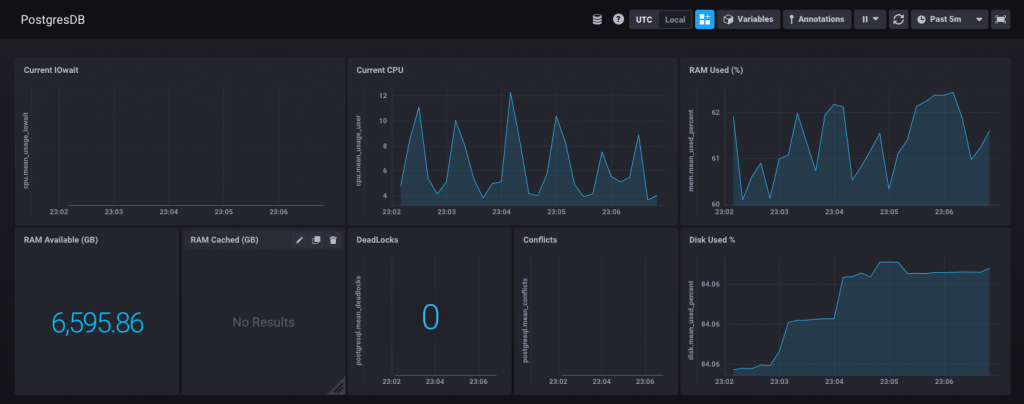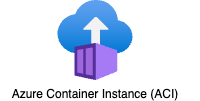Introduction
In the ever-evolving landscape of data management, time series databases (TSDBs) have emerged as indispensable tools for handling and analysing temporal data. Whether tracking stock prices, monitoring IoT devices, or analysing system performance, TSDBs play a pivotal role in managing the unique challenges posed by chronological datasets. This blog article explores the key aspects of TSDBs, their applications, and why they have become an integral part of modern data architectures.

Understanding time series databases
Having highlighted the pivotal role of TSDBs, let’s delve into what exactly a time series database is and how it differentiates itself from traditional databases. At its core, a time series database is designed to efficiently handle data points indexed by time. Unlike traditional databases that excel at random access patterns, TSDBs are optimised for sequential, time-ordered data. This fundamental shift in design enables them to provide high-performance queries and aggregations over time-centric datasets. Previously, TSDBs were mainly used for processing volatile financial data and streamlining stock trading. However, with the evolution of technology, new use cases continue to emerge. The importance of TSDBs continues to grow as the demand for actionable insights derived from temporal data becomes increasingly crucial in our data-driven world.
The need for time series databases
Let’s explore the unique challenges they address and the needs they fulfil. The need arises from the unique challenges posed by time-ordered datasets and the specific requirements of applications that heavily rely on temporal data. Below are some key factors why TSDBs are the fastest-growing database today:
- Designed for scalability, TSDBs scale horizontally and vertically to accommodate the increasing volumes of time-centric data generated by growing datasets over time.
- TSDBs efficiently handle sequential time-ordered data, ensuring optimal storage, retrieval, and faster query performance compared to traditional databases.
- TSDBs facilitate real-time analytics, providing immediate insights and decision-making capabilities based on the latest temporal data, particularly beneficial in finance or dynamic operational environments.
- TSDBs include features for automated data retention policies and automated downsampling, ensuring efficient storage usage and minimising the risk of storing obsolete data in time series data with limited relevance.
- Crucial for infrastructure monitoring, TSDBs help track changes, identify bottlenecks, and ensure consistent performance, maintaining consistency across various components of an infrastructure.
- Well-suited for IoT data, TSDBs efficiently handle the high-frequency, time-sensitive nature of continuous streams of time-stamped data generated by IoT devices.
- Adaptable to evolving technology environments, including cloud and hybrid setups, TSDBs offer flexibility, allowing seamless integration into modern IT architectures.
TSDBs characteristics and features
Having established why TSDBs are essential, we now turn to their key characteristics and features that make them so effective for handling time-centric data.
Sequential storage
Time series databases store data sequentially, allowing for efficient retrieval and analysis of time-ordered datasets.
Timestamps
Every data point in a time series database is associated with a timestamp, allowing for precise temporal queries.
Aggregation and downsampling
TSDBs often support built-in functions for aggregating data over specific time intervals, enabling trend analysis and downsampling for large datasets.
Retention policies
These databases typically include mechanisms for automatically managing data retention based on predefined policies, ensuring optimal storage usage.
Scalability
Time series databases are designed to handle massive volumes of data and are scalable both vertically and horizontally to accommodate growing datasets.
Applications of time series databases
The distinct features of TSDBs not only define their capabilities but also open up a wide range of applications. Let’s examine the diverse sectors where TSDBs are making an impact.
- Financial Markets: Time series databases are extensively used in financial institutions for tracking stock prices, currency values, and other market indicators.
- IoT and Sensor Data: IoT devices generate vast amounts of temporal data. TSDBs efficiently manage this data, making them essential for IoT applications.
- Monitoring and Observability: System performance metrics, application logs, and network monitoring data benefit from the chronological organisation provided by time series databases.
- Environmental Monitoring: Tracking changes in environmental conditions, such as weather patterns and pollution levels, is made more manageable with TSDBs.
- Healthcare and Biometrics: TSDBs are applied in healthcare for managing and analysing time series data related to patient monitoring, biometrics, and medical sensor readings.
- Energy Management: Applied in energy sectors for monitoring and managing time series data associated with energy consumption, grid performance, and renewable energy sources.
- Infrastructure Monitoring: Used for tracking changes, identifying bottlenecks, and ensuring consistent performance in infrastructure monitoring scenarios.
- Supply Chain Management: Applied in supply chain management for tracking and analysing time series data related to inventory levels, order fulfilment, and logistics.
- Cybersecurity: TSDBs play a role in cybersecurity by managing and analysing time series data related to network security events, threat detection, and incident response.
Popular time series databases
Understanding the applications of TSDBs in various domains naturally leads us to some of the most popular TSDBs in the market today. There are many available, below is the list of some popular ones:
- InfluxDB: InfluxDB is specifically designed for time series data, making it well-suited for applications that involve tracking and analysing data points over time. It excels in scenarios where data is being written continuously at high volumes while users also require the ability to query that data quickly after ingesting it for monitoring and real time analytics use cases. InfluxDB is known for its high write and query performance, InfluxDB is a popular open-source time series database.
- Prometheus: An open-source monitoring and alerting toolkit often used for cloud-native applications.
- Graphite: A scalable and flexible open-source TSDB commonly used for monitoring and graphing.
- TimescaleDB: TimescaleDB is an open source time series database built on top of PostgreSQL. It was created to address the challenges of managing time series data, such as scalability, query performance, and data retention policies. However, TimescaleDB may not be the best choice for all time series use cases.
Conclusion
TSDBs have revolutionised the way organisations handle and analyse temporal data. Their efficiency in managing chronological datasets makes them a cornerstone in various domains, from finance to IoT and beyond. As the demand for real-time insights continues to grow, the role of TSDBs in shaping the future of data management is set to become even more pronounced. Embracing these specialised databases is not just a technological choice; it’s a strategic move toward unlocking the full potential of time-centric data.
At LimePoint, we understand the critical role that TSDBs play in modern data management. As an official partner of InfluxDB, we bring to the table a wealth of expertise and experience. Whether you are exploring TSDB options for the first time or looking to enhance your existing systems, our team is equipped to provide tailored solutions that meet your specific needs.
👉 For guidance in navigating the complexities of TSDBs and to leverage the full capabilities of InfluxDB, reach out to our team of experts. Let us help you transform your data management strategy and harness the power of real-time data analytics.


